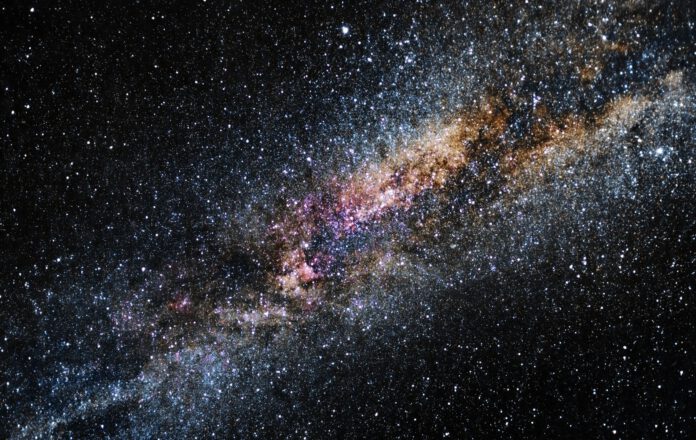
Galactic Discovery Poses New Questions About Dark Matter
Astronomers have discovered a record-breaking galaxy that’s so minute and lightweight, it beggars belief how it has remained in existence. This discovery, possibly packed with dark matter, provides a fascinating insight into the cosmic order.
The Newly Found Companion: Ursa Major III/ UNIONS 1
The newly discovered entity, named Ursa Major III/ UNIONS 1, or UMa3/U1 for short, is a kind of Milky Way satellite galaxy that orbits around our galaxy. Located in the constellation ‘Great Bear’, UMa3/U1 is relatively close, set 30,000 light-years away from the sun. This galaxy isn’t large: it spans only 10 light-years from top to bottom and carries approximately 60 stars that together weigh sixteen times more than the sun. Researcher Will Cerny, who was part of the study, explains how the small size of UMa3/U1 astounds scientists as it has survived against astronomical odds. He suggests two theories for its survival: either it’s a small galaxy held together by a vast amount of dark matter, or it’s a star cluster on the brink of extinction. Given the fact all the stars within it move at approximately the same speed, it is likely the first theory: an insignificantly small galaxy packed with dark matter.
The Use of Observatories in the Research
The researchers made use of two observatories based in Hawaii for the study: the W. M. Keck Observatory and the Canada-France-Hawai’i Telescope (CFHT). UMa3/U1 was initially sighted by the Ultraviolet Near Infrared Optical Northern Survey (UNIONS) of CFHT. Following the first sighting, the researchers proceeded to explore this galaxy more decisively using the Keck Observatory’s Deep Imaging Multi-Object Spectrograph (DEIMOS). Fellow scientist Marla Geha, who also contributed to the research, illuminates us about the unique attributes of UMa3/U1. She dispels initial doubts that it might be an arbitrary grouping of similar stars. After examining the DEIMOS measurements, it is evident that this is not the case.
Theory of Lambda Cold Dark Matter Solidified?
The study’s results carry substantial weight as they could support the Lambda Cold Dark Matter (LCDM) model. According to this theory, galaxies like the Milky Way should be surrounded by feeble and ancient companions bursting with dark matter. UMa3/U1 could be the embodiment of this prediction; researchers speculate that it could contain 7000 times more dark matter than ‘ordinary’ matter. Definitive findings are yet to be produced for this case, as more detailed measurements of UMa3/U1 movements are still needed. However, the fact that UMa3/U1 is navigating through the Milky Way’s inner regions suggests this galaxy might indeed be laden with an extraordinary amount of dark matter. “Without dark matter, it’s unclear how UMa3/U1 has managed to endure for billions of years,” says researcher Raphaël Errani.
Exciting Implications for Future Observations
Although more research is paramount, the team is excited about their finding. Cerny postulates that regardless of whether UMa3/U1 is confirmed to contain a significant amount of dark matter or proven otherwise, it’s a landmark discovery. This could potentially be the tip of the iceberg, offering an example of a new class of extremely faint stellar systems that have previously escaped detection.











